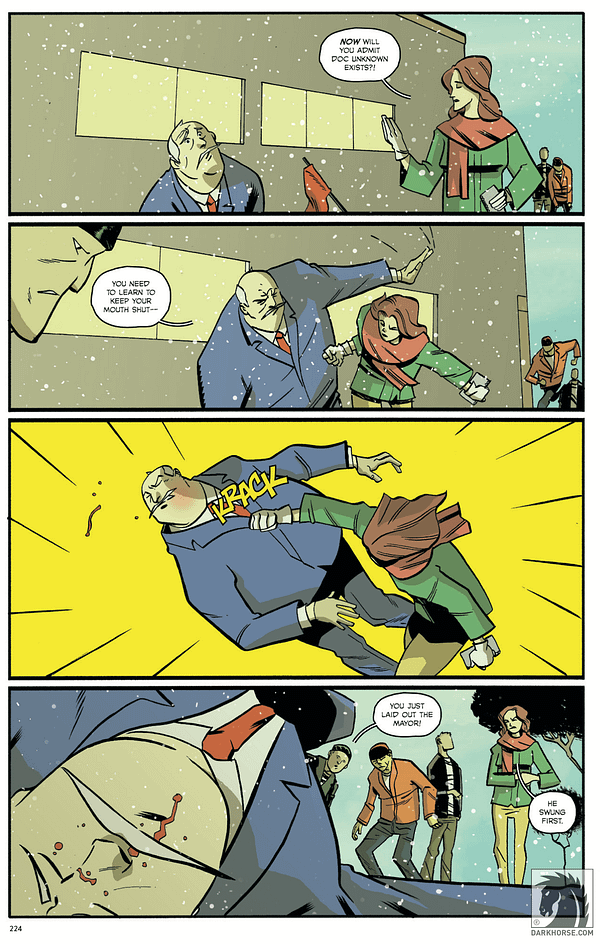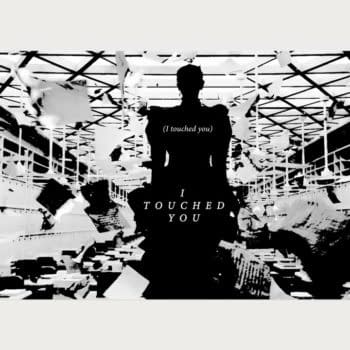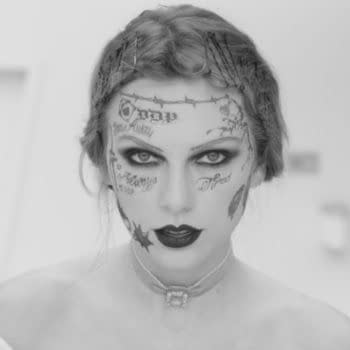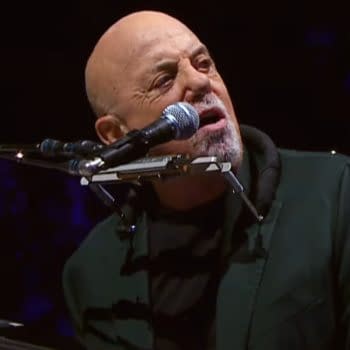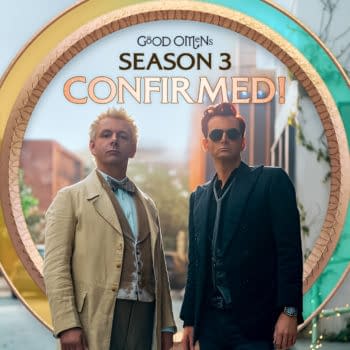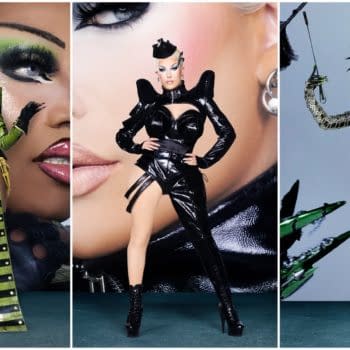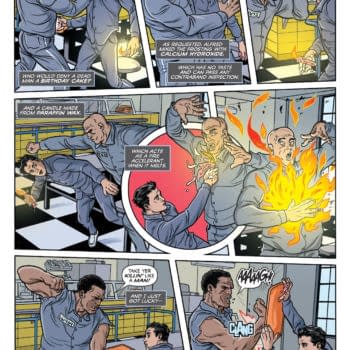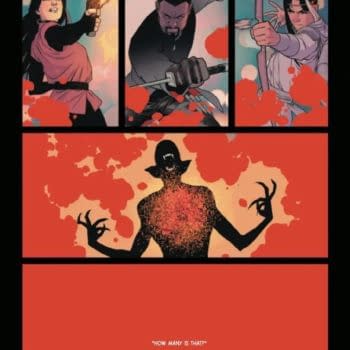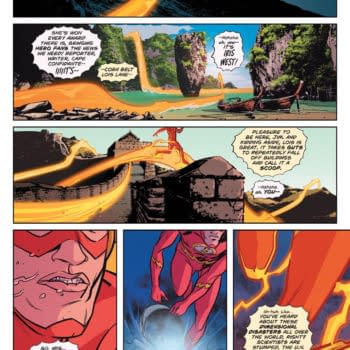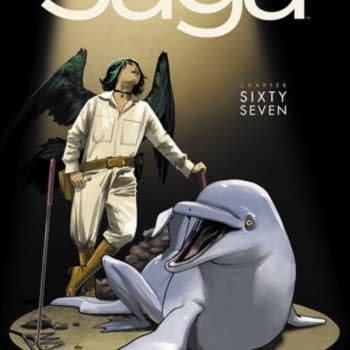Posted in: Comics, Conventions, Editor's Picks Comic News, san diego comic con | Tagged: comic books, Comics, dark horse, Doc Unknown, Fabian Rangel, HRL, jr, Ryan Cody, san diego comic con, sdcc, sdcc 2017
"My Favorite Kind of Pulp Adventurer": An Interview With Doc Unknown's Fabian Rangel, Jr.
Bleeding Cool reporter Mike Sangregorio writes:
This past Wednesday, the complete Doc Unknown was released by Dark Horse Comics. This fair-sized hardcover collects the entirety of the original comic series along with its miscellaneous and ancillary stories. Bleeding Cool spoke with writer and creator Fabian Rangel, Jr. about his inspirations, goals, and how great it is to see something you have worked so hard on hit stands while you're at Comic-Con for the first time.
Doc Unknown follows the titular hero as he protects the fictional Gate City from all manner of mystical and metaphysical threats. What separates this book from the other masked mystery men titles is the feel of the book. Doc (alias of librarian Warren Williams) lives in a city beset by a variety of threats all of which have a strange connection that is laid bare over the course of the title. There is also the occasional Nazi cyborg made from the remnants of a good friend.
Though he does not have any powers himself, he was trained in martial arts by a yeti, fought stone men beneath an ancient city, served as a fighter pilot during World War II, and is armed with a litany of special gadgets including his mystical, and iconic red goggles, which evolve into being the symbol of the legacy and mantle he ultimately leaves behind.
In typical classic pulp styling, Doc Unknown is as much the narrator as the main character. He lives and operates in a world where the average person lives side by side with the strange and he is one of the few who understands both worlds and how to protect one from the other.
The book wears its influences, which include fellow Dark Horse creators Mike Mignola and Eric Powell, on its sleeve. Rangel describes it as a love letter to everything he loves about superhero comics and his "all or nothing" book:
"I did not want to feel as if I did not do something here that I should have. If this was the only comic I ended-up making I wanted it to be the one I would be mad at myself for not making."
Rangel self-financed the original four-part series, which premiered digitally as part of the Comixology Submit program. Each was priced at $0.99, the lowest an issue can be put out for. From there, he used Kickstarter to put out a single issue featuring main antagonist Boss Snake, and two subsequent volumes to bring the saga to a close. This, he describes as "my trilogy, like any great film series."
The series, while it does leave the door open for other stories featuring different characters to wear the mysterious red goggles, is surprisingly finite. When asked if he would have altered either of the main characters' fate, or if he knew that Dark Horse would be publishing a collected edition, Rangel says no. He saw Doc as an opportunity to say and do everything he loves about the genre and medium. He could have had it go on, with the intent of making the adventures more specifically in the vein of Doctor Strange, but when he saw the opportunity to have the type of finality most major characters don't get, he took it. The book ends where it feels as if it organically should and is the better for it.
Rangel's primary collaborator on the book is artist Ryan Cody, who also wrote one of my favorite stories in the collection, the future-punk inspired tale that I will affectionately refer to as Doc Unknown Beyond, considering the major influence that Rangel admits Bruce Timm had on the series in general. Cody's art fits the tone perfectly as a blend of Michael Avon Oeming, Phil Hester, and a bit of the aforementioned Mignola, whose presence is felt most when it works its way in similar to the stygian horrors the hero faces: You don't realize it's there until you cannot look away.
Rangel says that his goal with Doc, as work progressed, was to do "a study of everything you could really do with superhero comics." Snake, the villainous gang boss, is a perfect example of this. He has sworn vengeance on our hero, but he never gets it. Resembling a reptilian snake man, and really in need of a hug more than blood-soaked revenge for some "imagined slight", Snake is the type of perfect antagonist that superhero comics do well, with his end being a matter of growth rather than rote violence. The reader sees Snake go from being a product of his environment to the unlikely hero that Gate City needs to help save itself from the forces of Atlantis.
Yes, Atlantis.
Gate City is so named because it has a mysterious connection to the temporally displaced, mythical kingdom. Snake is a descendant of their ruling class and many of the foes Doc faces have unknowingly let loose some horror that should have been left buried. Similar to Gravity Falls or Twin Peaks, Rangel weaves the city into the essence of the narrative. Gate City is a gateway, and that door swings both ways. There is never a specific description of the connection, but we are shown why this city needs a hero and what sacrifices protecting the citizenry from such forces requires. We are shown that Gate City may be what Doc has to protect, but that it is also the cause of so many of its own problems. Rangel uses the fictional locale as more than a backdrop and sets it apart from the other fictional cities that superheroes find themselves protecting.
Snake, Rangel admits, is inspired by the portrayal of Mr. Freeze from the classic Batman: The Animated Series. This idea that a villain is not just a villain because he is evil struck a chord with Rangel and, as the work progresses, becomes a central tenet of the theme and plot.
Another BTAS influence comes with the title's conclusion.
While the reader is teased with mystical Atlantean threats, an ancient two-headed despot, a gang of arch-foes including a vampire/dragon former love interest, the main conflict ultimately comes from an entirely different place. Rangel said that he wanted to have a foe that came from one of the "random punks that Batman, in the cartoon, would beat-up and that you would never see again. What if they obtained power and, when they returned, the hero didn't even recognize them?"
This feint turns act three on its head and allows Doc Unknown to read fresh in a way that so many other superhero stories just do not anymore. Even though it was originally published a few years ago, it is a comic that shows what there is to love about these type of stories, even if we think we have seen everything before.
The complete Doc Unknown is available now in hardcover from Dark Horse.














